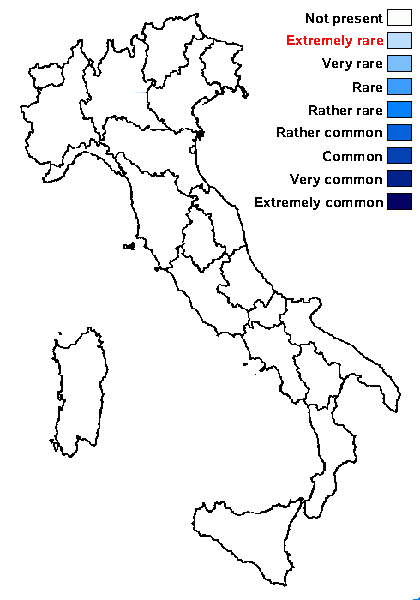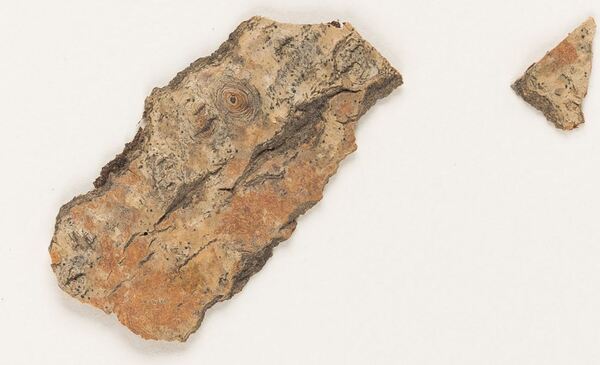Leptorhaphis lucida Körb.
Parerga Lichenol., 4: 384, 1863
Synonyms: Arthopyrenia lucida (Körb.) Müll. Arg.; Leptorhaphis tremulae Körb. var. lucida (Körb.) Keissl.
Distribution:
Description: Thallus crustose, endo- to very thinly episubstratic, whitish-grey, smooth, continuous, not well delimited, consisting of colourless to pale brown, smooth, thin-walled c. 2-3 μm thick hyphae constricted at septa, more or less loosely associated with algae. Perithecia black, shiny, circular, not surrounded by a basal fringe, scattered singly, 0.13-0.5 mm across, at first immersed in the bark but soon becoming superficial, hemispherical, the ostiole centrally located in a small depression. Involucrellum reddish brown, dark brown to almost black, c. 25-35 μm thick, not extending beyond the perithecium in a basal fringe, consisting of thin-walled, smooth, c. 3.5 μm thick hyphae intermixed with host tissue, forming a pseudoparenchymatous tissue; exciple colourless to pale brown, intergrading with the involucrellum and slightly thinner, also forming a pseudoparenchymatous tissue; pseudoparaphyses (2-)2.5(-4) μm thick; hymenial gel I- or I+ amber. Asci 8-spored, cylindrical-clavate, bi- and fissitunicate, with a broad, truncate apical beak, and biseriately arranged spores. Ascospores 1-septate, hyaline, fusiform, slightly curved, (37-)45-65(-70) x 2.5-4 μm. Photobiont absent or chlorococcoid. Spot tests: K-, C-, KC-, P-, UV-. Chemistry: without lichen substances.
Note: on various species of Populus; doubtfully lichenized. Widespread in Northern and Central Europe, and also reported from Austria (Carinthia), not far from the Italian border; to be looked for in Italy.
Growth form: Crustose
Substrata: bark
Photobiont: Trentepohlia
Reproductive strategy: mainly sexual

Predictive model
Growth form: Crustose
Substrata: bark
Photobiont: Trentepohlia
Reproductive strategy: mainly sexual

Predictive model
 INDEX FUNGORUM
INDEX FUNGORUM
 GBIF
GBIF


